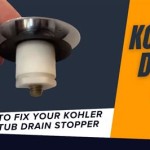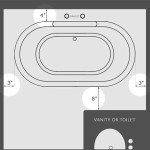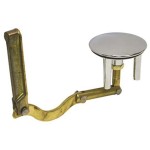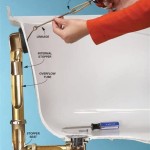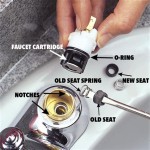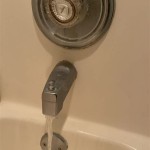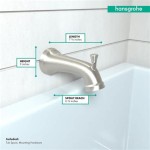How To Clean a Bathtub Drain Clogged With Hair
A clogged bathtub drain is a common household problem, often stemming from the accumulation of hair, soap scum, and other debris. Addressing this issue promptly prevents further complications, like slow drainage, unpleasant odors, and even potential plumbing damage. Several methods exist for clearing a bathtub drain clogged with hair, ranging from simple DIY solutions to more involved techniques. This article outlines effective strategies for resolving this pervasive issue, along with preventive measures to minimize future occurrences.
Identifying a Hair-Related Clog
Recognizing the signs of a hair-related clog is the first step toward effective remediation. The most obvious symptom is a noticeable slowing down of water drainage after a bath or shower. Water may pool around the drain for extended periods, failing to recede as quickly as it should. Another indicator is a gurgling sound emanating from the drainpipe when water is draining. This sound often indicates that air is being forced through a partially blocked passage. Unpleasant odors rising from the drain are yet another potential symptom, indicating that trapped hair and organic matter are decomposing within the drainpipe. If any of these signs are present, investigating a hair-related clog is warranted.
Before attempting any cleaning methods, it's advisable to visually inspect the drain opening. If a visible surface clog is present, it might be reachable with simple tools like tweezers or pliers. Removing this initial layer of blockage can sometimes alleviate the problem without requiring more invasive procedures. However, in most cases, the clog is located deeper within the drainpipe, necessitating more targeted approaches.
DIY Methods for Removing Hair Clogs
Several readily available household items can be employed to tackle hair clogs. These methods are generally safe for most plumbing systems and are often the first line of defense against a clogged drain. If these methods fail, consider calling a professional plumber.
One common and effective solution involves using boiling water. Carefully pour a kettle or pot of boiling water directly down the drain. The heat helps to loosen and dissolve soap scum and grease that are often binding the hair together. Exercise caution when handling boiling water to avoid burns and ensure the drainpipe material is suitable for high temperatures. Avoid using this method on PVC pipes, as it could result in the pipes warping.
Baking soda and vinegar is another popular DIY remedy. Pour about one cup of baking soda down the drain, followed by one cup of white vinegar. The combination will create a fizzing reaction that can help to break down the clog. Let the mixture sit for approximately 30 minutes, then flush the drain with hot water. Repeat this process if necessary. The chemical reaction assists in dislodging the grease and grime encasing the hair.
Dish soap can also be used to lubricate the hair clog, making it easier to dislodge. Pour a generous amount of dish soap down the drain, followed by hot water. The soapy water can help to soften the clog and allow it to flow through the drainpipe more easily. Let the hot water stream down the drain for several minutes.
Using Tools to Clear Hair Clogs
When DIY methods prove insufficient, specialized tools can be employed to physically remove the hair clog. These tools are designed to reach deeper into the drainpipe and either grab or break up the blockage.
A drain snake, also known as a plumbing snake or an auger, is a flexible tool specifically designed for clearing clogged drains. Insert the snake into the drain opening and carefully push it down the drainpipe. Rotate the snake as it advances to help it break through or grab onto the clog. Once resistance is felt, continue rotating the snake to entangle the hair and other debris. Slowly pull the snake out of the drain, removing the attached clog. Repeat this process until the drain is clear. Several drain snakes can be found in a variety of lengths, which range from drum augers to closet augers.
A bent wire hanger can serve as an alternative tool, especially for clogs located close to the drain opening. Straighten the wire hanger and bend one end to create a small hook. Carefully insert the hooked end into the drain and probe around, attempting to snag the hair clog. Once the hair has been snagged, gently pull the hanger out, removing the attached debris. Exercise caution when using a wire hanger to avoid scratching or damaging the drainpipe. The bent wire hanger should never be inserted forcefully into the drainpipe, as this could cause further damage.
A specialized drain-cleaning tool, often made of barbed plastic, can also be used to extract hair from the drain. These tools are designed to be inserted into the drain and twisted to snag hair and other debris. Once the drain-cleaning tool is fully inserted, slowly pull it out, removing the attached clog. The barbs on the tool help to grip the hair tightly, making it an effective method for removing stubborn clogs.
Preventative Measures to Minimize Hair Clogs
Preventing hair clogs is significantly easier than dealing with them after they occur. Implementing preventative measures can significantly reduce the frequency and severity of drain clogs. Several simple strategies can be adopted to minimize the amount of hair entering the drainpipe.
Using a drain screen or strainer is one of the most effective ways to prevent hair from entering the drain. A drain screen is a mesh or perforated cover that sits over the drain opening, catching hair and other debris before they can enter the drainpipe. Regularly clean the drain screen to remove accumulated hair and prevent it from overflowing into the drain. Drain screens are inexpensive and readily available at most hardware stores.
Regularly flushing the drain with hot water can also help to prevent hair clogs. After each shower or bath, run hot water down the drain for several minutes to flush away any loose hair or soap scum that may be clinging to the drainpipe. This helps to keep the drainpipe clear and prevents the buildup of clogs over time. This is a great addition to any cleaning routine for the bathroom.
Avoid pouring oily or greasy substances down the drain. These substances can solidify and trap hair, leading to clogs. Dispose of cooking oil and grease in a separate container rather than pouring it down the drain. Grease is one of the leading causes of drain clogs for any drain in the household, making it a priority for homeowners to avoid pouring it down any drain.
Consider using a hair catcher in the shower. These devices are designed to be placed on the wall of the shower, allowing you to easily collect loose hairs as you shower. This prevents the hair from entering the drain in the first place. Hair catchers should be cleaned regularly to avoid overfilling and potential drain blockages.
Periodically cleaning the drain with a drain cleaner can also help to prevent hair clogs. Follow the instructions on the drain cleaner carefully, and avoid using harsh chemicals that can damage the drainpipe. Enzyme-based drain cleaners are often a safer option than chemical drain cleaners, as they are less likely to damage the drainpipe. Follow the instructions listed on the enzyme-based drain cleaner to avoid any further damages.
When to Call a Professional Plumber
While many hair clogs can be resolved using DIY methods or simple tools, some situations require the expertise of a professional plumber. If the clog is particularly stubborn or located deep within the drainpipe, attempting to clear it yourself could potentially worsen the problem or damage the plumbing system. Contacting a plumber is crucial in these scenarios.
If DIY methods and tools have failed to clear the clog, it may be time to call a plumber. Repeated attempts to clear the clog without success can indicate a more complex issue, such as a buildup of debris further down the drainpipe or a problem with the plumbing system itself. Forcefully attempting to clear the clog can potentially damage the drainpipe or other plumbing components.
If the drain is emitting a foul odor that persists even after attempting to clear the clog, it could indicate a more serious issue, such as a blockage in the sewer line. A plumber can diagnose the problem and recommend the appropriate solution. Foul odors often accompany clogs consisting of organic matter, and can make a home unhygienic.
If there are signs of water damage or leaks near the drainpipe, it is essential to call a plumber immediately. Water damage can lead to mold growth and structural damage, and leaks can indicate a significant plumbing problem. Addressing these issues promptly can prevent further damage and save money in the long run. If water damage or leaks are observed, discontinue the use of all drains until a plumber can identify and resolve the issue.
A professional plumber possesses the necessary tools, expertise, and experience to diagnose and resolve complex drain clogs safely and effectively. Attempting to handle these issues yourself could potentially worsen the problem or damage the plumbing system. Investing in professional plumbing services can provide peace of mind and prevent costly repairs in the future.

How To Unclog Most Bathtub Drains By Removing Hair

How To Clean Hair Out Of A Shower Drain 9 Easy Ways

How To Clean Hair Out Of A Shower Drain 9 Easy Ways

5 Easy Ways To Unclog Bathtub Drain

How To Unclog Bathtub Drain Full Of Hair Stellar Plumbing

How To Clean Hair Out Of A Shower Drain 9 Easy Ways

How To Unclog A Bathtub Drain Without Chemicals Family Handyman

Top 5 Ways To Get Hair Out Of Your Drains

How To Unclog A Bathtub Drain Without Chemicals

How To Deal With Hair Clogs Liquid Plumr
Related Posts

